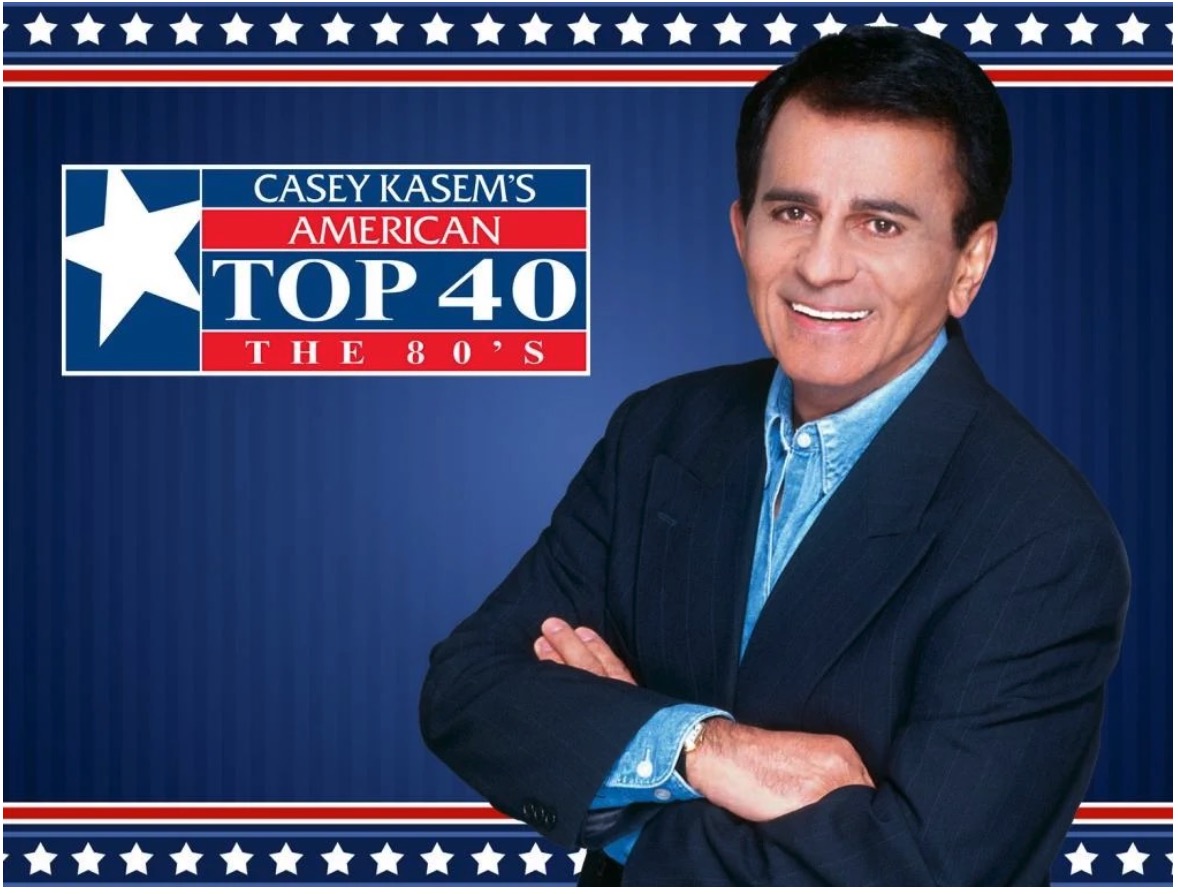In an era when radio connected millions and pop culture was carried on waves of vinyl and FM frequencies, few voices were as instantly recognizable —
In an era when radio connected millions and pop culture was carried on waves of vinyl and FM frequencies, few voices were as instantly recognizable — or as deeply trusted — as that of Casey Kasem. For more than three decades, Kasem wasn’t just a radio host; he was the nation’s musical compass, storyteller, and a gentle guide through the ever-evolving soundscape of American pop.
From Detroit to the Top 40
Born Kemal Amin Kasem in Detroit on April 27, 1932, the son of Lebanese immigrants, Casey Kasem began his career in radio while attending Wayne State University. His early gigs as a DJ in Flint, Michigan, then WJBK – Detroit and later in Los Angeles showcased his smooth delivery and keen ear for music trends. But it wasn’t until July 4, 1970, that he launched American Top 40 — a show that would not only define his legacy but revolutionize the way Americans consumed pop music.
The format was simple: a countdown of the top 40 songs in the U.S., based on Billboard charts, with Kasem’s distinctive blend of warmth, drama, and precision. What made it revolutionary was Kasem’s storytelling. Interspersed between chart-toppers were fascinating backstories, “Long Distance Dedications,” and uplifting messages that transformed the show into more than a playlist — it was a weekly narrative about life, love, loss, and triumph, soundtracked by the hits of the day.
The Producers
Behind the golden voice of Casey Kasem and the smooth countdowns of American Top 40 were two visionary producers who helped change the landscape of music radio: Tom Rounds and Don Bustany. Alongside Kasem, the two were co-creators of AT40, launching the show on July 4, 1970, with the goal of bringing the Billboard music charts to life with personality, stories, and style. Rounds, a former program director and innovative radio executive, brought production savvy and syndication know-how from his time at stations like KFRC in San Francisco. His business foresight helped turn a niche idea into a nationwide radio institution.
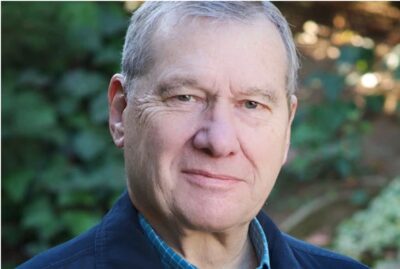
Tom Rounds
Don Bustany, meanwhile, was the behind-the-scenes architect of the show’s tight scripting and emotional pacing. A seasoned writer and producer of Lebanese-American heritage like Kasem, Bustany helped craft the show’s signature blend of countdown excitement, trivia, and listener connection — including the now-famous “Long Distance Dedications.” Together, Rounds and Bustany ensured that American Top 40 was more than a music show; it was an experience. Their collaboration with Kasem laid the foundation for a format that has been imitated countless times but never equaled.
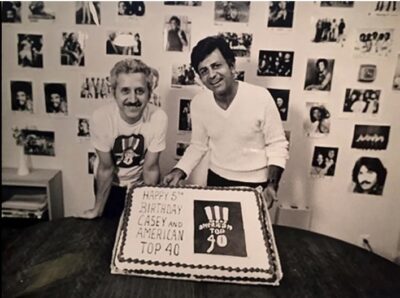
Don Bustany & Casey Kasem
Television and the Small Screen
In the 1980s, Kasem brought his countdown charm to television with America’s Top 10, a syndicated weekly music video show that brought pop rankings into living rooms nationwide. For viewers who couldn’t hear him on the radio, this show was a chance to see and feel the man behind the voice.
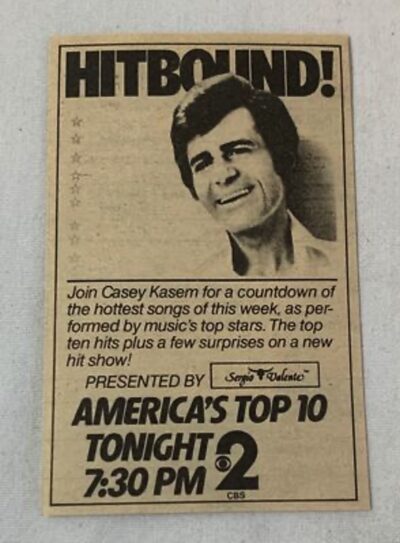
AT10 TV Promo Ad
“Keep Your Feet on the Ground…”
Kasem’s signature sign-off — “Keep your feet on the ground and keep reaching for the stars” — became a generational mantra. It was more than a catchphrase; it encapsulated Kasem’s optimistic ethos and his ability to bring heart into what might otherwise be a mechanical chart rundown. Whether he was announcing a Bee Gees ballad, a Michael Jackson hit, or a Madonna breakthrough, Kasem made it feel personal.
Beyond the countdown, Kasem was also the beloved voice of Shaggy in the Scooby-Doo franchise, beginning in 1969 — a role he held for over 30 years. His voice was not just iconic in music but in animation, earning him a special place in both radio and cartoon history.
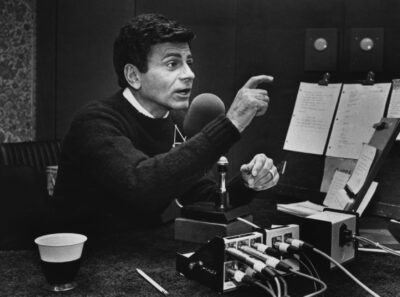
Casey at the mike
Challenges, Legacy, and Controversy
Behind the scenes, Kasem was a passionate advocate for Arab-American representation, vegetarianism, and social causes. He walked away from Scooby-Doo for several years in protest over a hamburger commercial and was vocal about political issues throughout his life.
In later years, Kasem’s declining health — including a battle with Lewy body dementia — became the subject of public legal disputes between his second wife, Jean Kasem, and his children from a previous marriage. Despite the family drama, the outpouring of love following his death on June 15, 2014, underscored the impact he had on generations of listeners.
![]()
Casey and Publisher, Jim Hampton
American Top 40 | Casey Kasem | July 4, 1970
USA Radio Museum
A Lasting Voice
Casey Kasem’s contributions to radio are immeasurable. He transformed a chart into a story, a show into a ritual, and a voice into a friend. For millions, Sunday mornings were synonymous with his calm cadence and joyful enthusiasm for the music of the moment.
In a world of fleeting fame and disposable playlists, Kasem gave pop music permanence and meaning. And as long as old tapes, tribute broadcasts, and nostalgic memories endure, his voice — counting down the songs of our lives — will never truly fade.
###

